
Austramathes is a genus of moths of the family Noctuidae. It is endemic to New Zealand.

Meterana is a genus of moths of the family Noctuidae. This genus is endemic to New Zealand.

Bityla sericea is a species of moth in the family Noctuidae. This species is endemic to New Zealand. It is classified as "At Risk, Naturally Uncommon" by the New Zealand Department of Conservation.

Australothis volatilis, also known as the fuzzweed moth, is a species of moth in the family Noctuidae. It is endemic to New Zealand. This species has been classified as critically endangered by the Department of Conservation.

Meterana pictula is a moth of the family Noctuidae. It is endemic to New Zealand. This species has been classified as "At Risk, Declining" by the Department of Conservation.
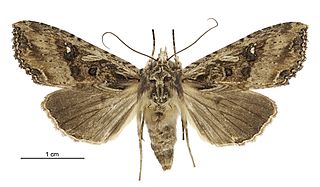
Meterana stipata is a moth of the family Noctuidae. It was described by Francis Walker in 1865 from specimens collected in Auckland. It is endemic to New Zealand.

Meterana pauca is a moth of the family Noctuidae. It is endemic to New Zealand. It was described by Philpott in 1910 from two specimens held at the Otago Museum collected in the Wairarapa and a specimen he had collected in Wallacetown.
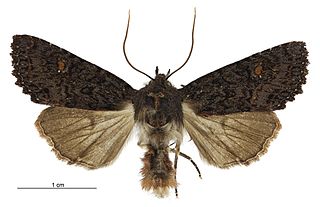
Meterana vitiosa is a moth of the family Noctuidae. It was described by Arthur Gardiner Butler in 1877 from specimens collected by Dr Hector and Mr J. D. Enys in the South Island. It is endemic to New Zealand. The habitat this species prefers consists of forests and shrub-land areas. Adults are on the wing throughout the year.

Aponotoreas anthracias is a moth of the family Geometridae. It is endemic to New Zealand. This species was first described by Edward Meyrick in 1883 under the name Larentia anthracias. Specimens of this species have been collected in the Maungatua ranges, the Remarkables and the Hawkdun Ecological District in Otago. The host plant of this moth is Dracophyllum.

Meterana praesignis is a species of moth in the family Noctuidae. It was described by George Howes in 1911 from specimens collected in Orepuki in September and November. It is endemic to New Zealand.

Meterana pansicolor is a species of moth in the family Noctuidae. It is endemic to New Zealand. This species is classified as "At Risk, Naturally Uncommon" by the Department of Conservation.

Meterana ochthistis is a species of moth in the family Noctuidae. It was described by Edward Meyrick in 1887 from specimens obtained in Christchurch. It is endemic to New Zealand.

Meterana exquisita is a species of moth in the family Noctuidae. This species is endemic to New Zealand. It is classified as "At Risk, Relict'" by the Department of Conservation.
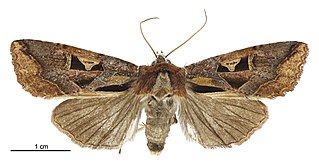
Meterana grandiosa is a species of moth in the family Noctuidae. This species is endemic to New Zealand. It is classified as "At Risk, Relict'" by the Department of Conservation.

Asaphodes dionysias is a species of moth in the family Geometridae. This species is endemic to New Zealand and is only known from mountainous areas in Central Otago. It lives in open grassy mountainous habitat at altitudes up to 1750 m. It is also known to live in wetland habitat. The larvae of this species feed on native herbs. The adults of this species are on the wing in January and February. The adult female of the species has reduced wing size in comparison to the male.

Notoreas ischnocyma is a species of moth in the family Geometridae. This species is endemic to New Zealand. This species is found in Canterbury and Otago.
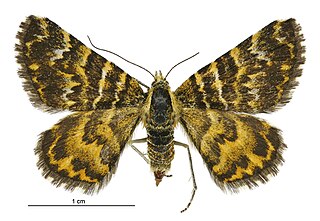
Notoreas elegans is a species of moth in the family Geometridae, endemic to New Zealand. This species has a wide distribution in New Zealand and is therefore regarded as not being in need of conservation.

Notoreas isomoera is a species of moth in the family Geometridae. It is endemic to New Zealand.

Notoreas niphocrena is a species of moth in the family Geometridae. It is endemic to New Zealand.
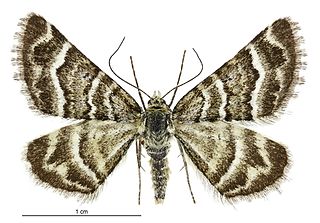
Notoreas paradelpha is a species of moth in the family Geometridae. It is endemic to New Zealand.





















